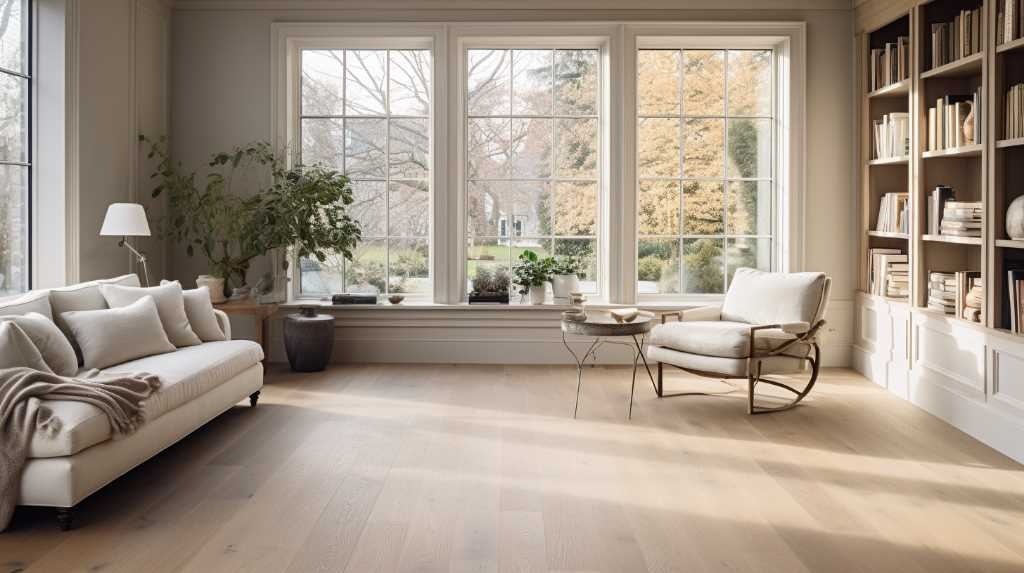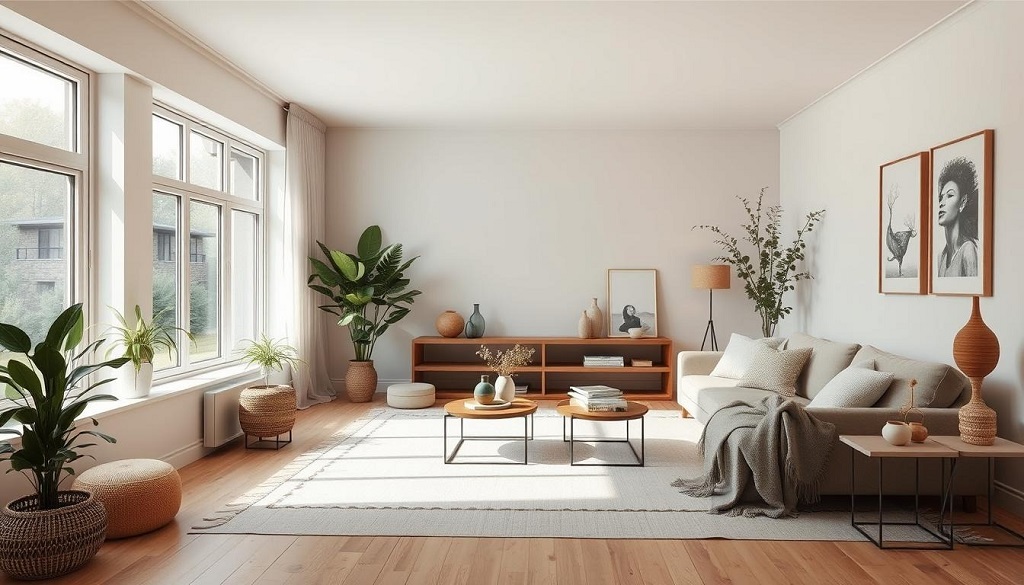Floor plants are a dynamic way to elevate any living space, especially when paired with neutral-colored flooring. The understated elegance of beige, grey, or white floors provides a clean canvas for showcasing the lush vibrancy of greenery. With thoughtful design techniques, you can turn this pairing into an aesthetic masterpiece. Let’s explore how simple elements like color contrast, plant selection, and layout can make your floor plants shine. For inspiration, explore Begardenly to discover expert tips.
Neutral Flooring as the Perfect Backdrop for Plants
Neutral floors possess an understated charm that enhances the visual impact of floor plants. Their light and subtle hues reflect natural light, making the green tones of plants more vivid. But why does this pairing work so well?
Studies in color psychology suggest that green is associated with calm and rejuvenation. When contrasted with neutral tones like grey or beige, the visual harmony creates a serene environment that promotes relaxation. This combination can increase perceived spatial openness, making small rooms feel larger and more welcoming.
For example, a living room with soft white flooring and a tall monstera plant in a wooden planter creates a seamless blend of modern and natural aesthetics. Adding a medium-sized snake plant nearby offers height variation, enhancing depth. To amplify the effect, experiment with planter materials—metallic pots complement minimalist interiors, while textured ceramics add rustic warmth.
How to Choose the Best Plants for Neutral Floors
Selecting the right plants for neutral floors is as much about their size and structure as their color. Large, leafy plants like fiddle-leaf figs or rubber trees add drama, while compact plants like pothos or ZZ plants bring understated charm. Each choice should align with your interior’s overall theme.
Consider your room’s lighting. Neutral floors reflect natural light, creating a brighter environment that allows vibrant plants like bird-of-paradise or areca palms to thrive. Low-light rooms with darker grey or beige flooring benefit from hardy plants such as peace lilies or philodendrons.
A pro tip is to match planters to your room’s accent colors. For instance, pairing a rubber tree in a charcoal-colored pot with soft beige flooring creates a cohesive palette. Play with heights by grouping plants of varying sizes. An oversized monstera beside a smaller, bright green pothos can create a layered, visually pleasing arrangement.
Read More Also: How Do Hidden Motion Sensor Options Solve Unusual Home Automation Needs?
Placement and Layout Tips for Maximum Impact
The arrangement of floor plants is just as crucial as their selection. Start by placing taller plants in corners or behind furniture to draw the eye upward. This strategy highlights ceiling height, making the room appear larger. Use smaller plants on decorative stands to create focal points at different levels.
Neutral-colored flooring opens the door for creative layouts. For instance, grouping three to five plants of varying heights in a triangular arrangement can add depth to your space. In open-plan designs, a row of bamboo palms or large planters can act as natural dividers while maintaining the airy feel of the room.
Strategic spacing is key to avoid a cluttered look. Place plants about a foot apart, allowing their unique shapes to stand out. When in doubt, remember less is often more—let your plants breathe, and your neutral flooring will continue to shine.
Read More Also: How to Fix Erratic Speedometer Readings on a Ford F-150: Expert Solutions You Need to Know
Maintaining the Look and Protecting Your Floors
Keeping your floor plants and neutral flooring in top shape requires attention to maintenance. Neutral-colored flooring can highlight dust and dirt, so regular cleaning is essential. Wipe plant leaves weekly with a damp cloth to maintain their glossy appearance. For ceramic or terracotta pots, use coasters or mats to prevent scratches or stains on your flooring.
For mishaps involving chemicals like herbicides, it’s crucial to address spills promptly. If you’re wondering how to clean up roundup spill, follow proper methods to ensure no lasting damage. Click on https://begardenly.com/gardening-tips/how-to-clean-up-roundup-spill-on-concrete/ for detailed cleanup instructions.
Last Words
The synergy between floor plants and neutral-colored flooring can transform interiors, adding a sense of tranquility and style. With the right selection, placement, and care, these natural elements breathe life into any room. Embrace the creative possibilities and watch as your home evolves into a space that seamlessly blends modernity with nature.
FAQs
What plants work best for neutral-colored flooring?
Plants with vibrant foliage, like monstera, fiddle-leaf fig, or snake plants, create striking contrasts against neutral floors.
How can I prevent water damage to my floors from plants?
Use waterproof trays or mats under pots, and avoid overwatering to minimize leaks or stains.
Can I mix different plant styles in one room?
Yes, combining plants with varying leaf sizes and heights adds texture and interest to your space.
Do neutral floors enhance plant appearance?
Absolutely! They reflect light and create a minimal backdrop that allows greenery to stand out.
What planters pair well with neutral-colored flooring?
Neutral floors look stunning with metallic, ceramic, or wooden planters in contrasting tones like black, gold, or pastel hues.




